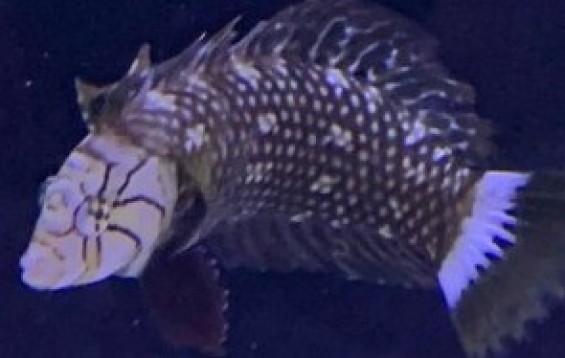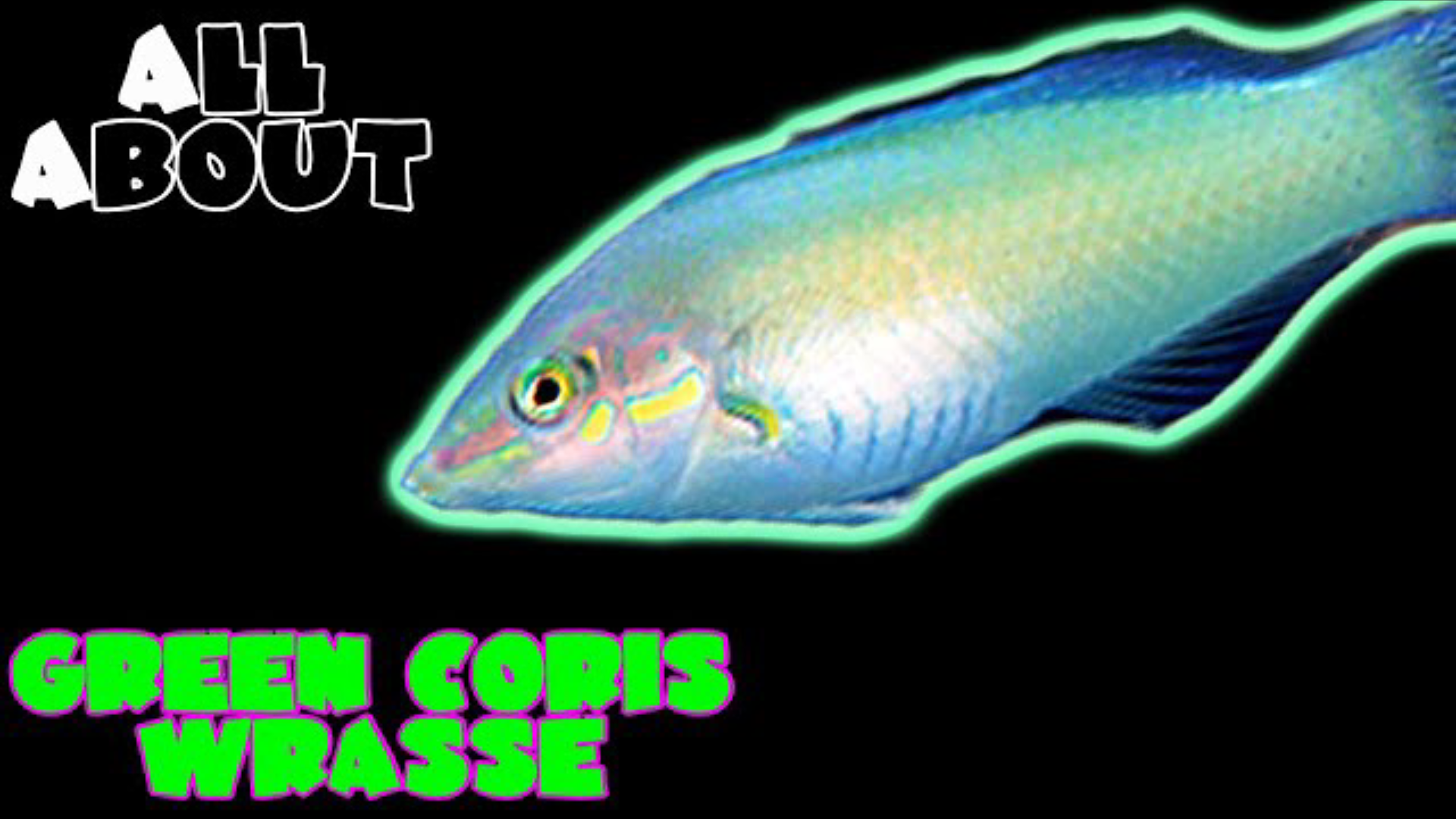- Name:
Dragon Wrasse
(View AKA's) - Family: Labridae
- Species: Wrasse
- Scientific Name: Novaculichthys taeniourus


More Details
General info about Dragon Wrasse
The Dragon Wrasse juvenile has a burgundy body with white markings. The fins are also notable in their appearance, especially the first two dorsal spines that form a cow-lick. The adult does not have the large dorsal spines and has a light blue to green body with impressive darker markings.
It should reside in an aquarium with a 2-4 inch sandy bottom in which it can submerge itself since it sleeps in the sand. It may be kept with fish that are aggressive or larger than it is but should be housed with more passive fish as a juvenile, house only one per tank. It should not be placed in a reef aquarium. As the Dragon Wrasse matures it will eat crustaceans, snails, shrimp, starfish, smaller fish, worms, and other invertebrates. It also moves the corals and rearranges the rocks in the aquarium to find food. The aquarium should also have a tight-fitting lid to prevent it from jumping out.
Caution with Dragon Wrasse
Wrasse are considered jumpers make sure your aquarium has a tight-fitting canopy or screen cover to prevent the Wrasse from jumping out of your aquarium. Wrasse have been known to jump through the smallest of holes in a canopy.
Wrasses prefer to have a 2" (5cm) sandbed to allow them to burrow into the sand to sleep or when they feel like they are in danger. Some people with bare bottom tanks have also added a Tupperware with a 2" deep sand bed to accommodate the wrasse's needs.
They are generally peaceful but may display aggression towards members of the same species.
Relevent Articles
Original Detail
| Name | Species | Family | Scientific Name | More Detail | Added by |
|---|---|---|---|---|---|
| Dragon Wrasse | Wrasse | Labridae | Novaculichthys taeniourus | The Dragon Wrasse juvenile has a burgundy body with white markings. The fins are also notable in their appearance, especially the first two dorsal spines that form a cow-lick. The adult does not have the large dorsal spines and has a light blue to green body with impressive darker markings. It should reside in an aquarium with a 2-4 inch sandy bottom in which it can submerge itself since it sleeps in the sand. It may be kept with fish that are aggressive or larger than it is but should be housed with more passive fish as a juvenile, house only one per tank. It should not be placed in a reef aquarium. As the Dragon Wrasse matures it will eat crustaceans, snails, shrimp, starfish, smaller fish, worms, and other invertebrates. It also moves the corals and rearranges the rocks in the aquarium to find food. The aquarium should also have a tight-fitting lid to prevent it from jumping out. | PalaciosAn |
Changed by users
| Submitted Date | Submitted By | Status | Action |
|---|


